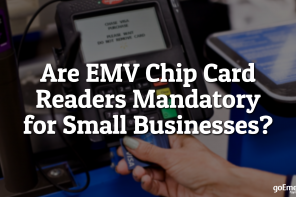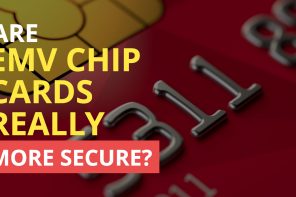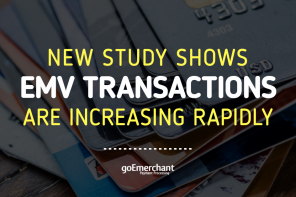The percentage of EMV enabled payment cards is steadily on the rise, replacing traditional magnetic stripe payment cards. As a merchant, you should be aware of the potential risks if you have not enabled EMV technology at your business. You may be putting yourself, your customers and your business in harm’s way.
First let’s look at the difference between magnetic stripe (mag stripe) payment cards and chip cards, also known as smart cards. In mag stripe cards, the credit or debit card’s magnetic stripe contains three tracks of data encoded with information about the cardholder’s account — such as their credit card number, full name, the card’s expiration date and the country code. With the new generation of smart cards, no magnetic stripe is needed to make a transaction, however it is often included as an alternative to EMV payment processing if the EMV technology is not available.
EMV cards are manufactured with an embedded microprocessor (microchip), a type of tiny computer that offers stronger security features and other capabilities not available on the magnetic stripe cards. During a transaction, chip cards are inserted or dipped into the card reader and left in place as information passes between them. It is a relatively new experience for customers and merchants, but it’s easy to accept knowing that this change is for the better.
The U.S. is the last major market to get on board with EMV payment processing. EMV, developed by Europay, MasterCard® and Visa®, is a global standard for credit and debit payment cards based on chip card technology. It uses secure smart chip technology, encryption and other cryptography measures which makes it extremely difficult for unauthorized users to access or use its information or to create duplicate cards. Magnetic stripe cards are more easily exploitable by hackers and vulnerable to counterfeiting if lost or stolen.
Some merchants have not prepared their point of sale by upgrading to EMV technology despite the October 1, 2015 liability shift and that can mean trouble for your business. As of that date, the liability for magnetic stripe fraud shifted to the party to the transaction that does not support EMV, which is why it is important for retailers and service providers to become EMV compatible. (The liability shift does not go into effect until October of 2017 for fuel dispensers.)
As the use of mag stripe transactions decline with the transition to EMV technology, all parties involved will have distinct advantages:
- EMV reduces chargebacks due to fraudulent or stolen cards saving time and money for merchants
- EMV cards are accepted worldwide unlike magnetic stripe cards
- EMV helps support tap-and-go contactless transactions (NFC) which is the basis of digital wallet technology
- EMV cards are considered much more secure against credit card fraud than mag stripe cards because more information can be stored on the chip than on the mag stripe, enhancing cardholder verification methods.
- EMV chips generate a unique code for each individual transaction that cannot be used again, rendering any stolen transaction information useless to thieves.
If you are wondering if you can afford to upgrade to EMV technology, the question you should really be asking is, can you afford not to?




